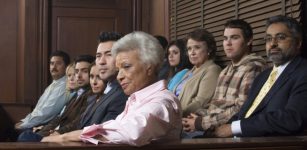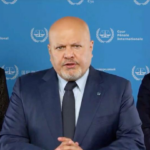The Problem of Imbalanced Juries, Part 1

The right to trial by jury is a fundamental part of our criminal justice system, and one of the few rights guaranteed by our constitution.
The reasoning is that the guilt or innocence of an accused person is supposed to be decided by a ‘jury of their peers’, rather than by a single judge. Part of the logic is that having a panel of one’s peers will effectively iron out any personal prejudices.
But the reality in Australia is that jurors are selected from the electoral role, which means that all jurors are Australian citizens. Permanent residents are not eligible -which excludes a sizeable group made up of a higher proportion of ethnic minorities than the general population.
This means that the concentration of ‘white’ Australians called for jury duty is higher than that in the population at large. The result is that juries will often comprise 10, 11 or even 12 (out of 12) ‘white’ jurors even before the jury panel is subjected to ‘peremptory challenges’.
What are ‘Peremptory Challenges’?
The process of choosing a jury in Australia involves, firstly, giving each person who is called for jury duty a number.
Upwards of 30 potential jurors will then enter the courtroom, be read a list of witnesses, be asked whether they know any of the witnesses or otherwise have a good reason for being excused from juror duty.
Eventually, the juror numbers will be placed into a container and twelve numbers will be pulled out, one after the other.
The juror’s whose numbers are called will enter the jury box and, ultimately, each will be asked to stand.
When a juror stands, either the prosecution or defence can make a ‘peremptory challenge’ – in other words, remove that juror from the jury panel.
The defence and prosecution will each have 3 ‘challenges’ for every defendant that is being tried.
The unfairness arises when the defendant is from an ethnic minority and the prosecution ‘challenges’ (removes) the only one, two or three remaining jurors who are from similar ethnic backgrounds. Needless to say, there is a high chance that the jurors replacing the removed ‘ethnic’ jurors will be ‘white’ and, voila, you have a jury that is all ‘white’, or close to it, trying a person from an ethnic minority – which is hardly a jury of that person’s peers.
The potential for unfairness is enhanced when the defendant is from a demonised group – such as Muslims in modern-day Australia – and the charges relate to conduct that is perceived as both connected to that group and particularly dangerous and heinous – such as terrorism.
The danger of injustice is multiplied when several people from the same ethnic minority are tried at once, because the prosecution will then have 3 challenges for each one of them!
The Law on Peremptory Challenges in NSW
The laws on peremptory challenges vary slightly from state to state.
In NSW, section 42(1) of the Jury Act 1977 says that:
- Each person prosecuted has 3 challenges without restriction; and
- The prosecution has 3 challenges without restriction for each person prosecuted.
Section 42(1A) says that, if the jury is larger than 12, each person prosecuted and the Crown has one more challenge without restriction.
And section 42(2) says that any number of challenges can be made if the Crown and all the defendants agree.
Criticism of Peremptory Challenges
Critics of peremptory challenges point to the unfairness of removing jurors based upon the fact that they are of the same, or similar, racial background to the accused person.
A 2007 by the New South Wales Law Reform Commission was also critical of challenging, concluding that:
“Challenging is an arbitrary exercise dependent upon guesswork and dubious mythology … not necessarily conducive to securing a fair, impartial or representative jury.”
The Commission recommended that the process be reviewed to ascertain whether it actually enhances the likelihood of a fair trial, has no effect, or does the opposite.
The question of whether the pool from which potential jurors are selected should be broadened to include permanent residents has not, however, been looked at. There is an argument that the expansion of that pool would increase the likelihood of ethnic minorities being tried by a greater proportion of their own peers, reducing the potential for unfair prejudice.
Stayed tuned for more about the potential impact of imbalanced juries in part two, tomorrow.






